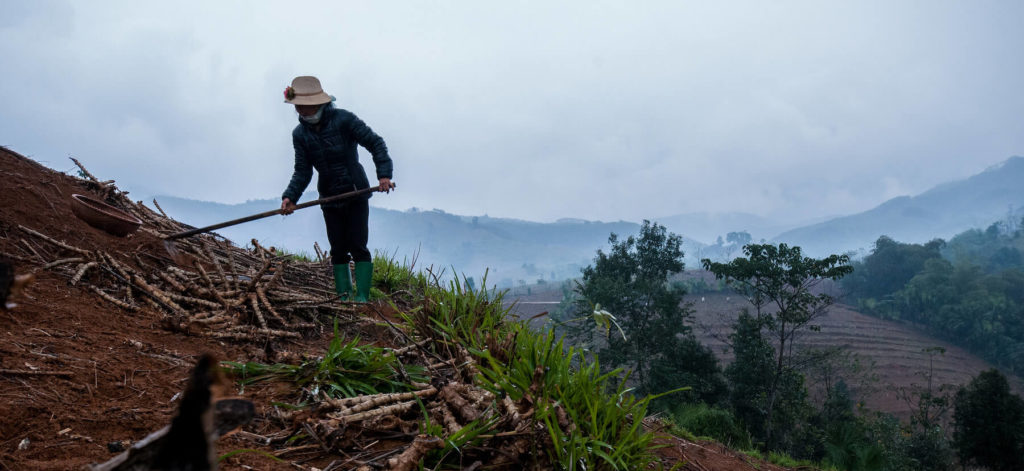For generations, upland communities of Vietnam, Thailand and Nepal relied on fruits, nuts, mushrooms and berries when harvests were low, and used shifting agriculture, allowing soil to rebound. However, with agricultural development and forest management evolving as discrete policy areas, these communities were denied access to forest in the interests of conservation and carbon credits. As a result, people in the uplands lost a critical source of food and income and got trapped in the vicious cycle of soil degradation.
In Thailand and Vietnam forest communities were resettled to river valleys, while forest-based livelihoods were prohibited. This pushed people to farm more intensively, using more agrochemicals. In Nepal community forest management is widespread, but with multiple restrictions.
In all the three countries, forest and agricultural land are discrete land-use areas, and there is no classification for multifunctional land use or agroforestry. Researchers from the Swedish University of Agricultural Sciences (SLU) and activists from Forest Action in Nepal criticise such policy segregation and push for an integrated approach which allows to use land in multiple ways and recognises agroforestry as a land-use type.
“Integrating agriculture and forestry would allow upland communities to develop land use that provides both food and income, at the same time as reducing the risk of erosion. The current land use policies of segregation between agriculture and forest lead to monoculture of crops in sensitive areas, increasing risks both to livelihoods and environment,” says Malin Beckman, SLU.
These are not empty claims: Studies indicate high food insecurity and poverty among upland communities in South and Southeast Asia in the areas where people lost access to forests. Moreover, the situation is the same even when they have been re-settled and granted cropland. One study found that across the Greater Mekong sub-region 75% of the population in the forested uplands live below the national poverty line. When interviewed, people from the resettled communities in Thailand and Vietnam reported that the farmland they have received, combined with current forest protection policies, are forcing them into unsustainable farming practices.
Aiming at moving agricultural production away from the slopes, governments of Thailand and Vietnam promote cultivation of cash crops, like maize, and irrigated crops in river valleys. However, both strategies are not sustainable in the long run. The cultivation of irrigated crops is becoming less viable because of the climate related risks like droughts, water shortages and floods, that damage harvests. Meanwhile, promotion of cash crops leads to monoculture farms, which contributes to deforestation, making steep treeless slopes even more vulnerable to landslides.
In this salutation, the negative effects of segregated management of forests and farming stand out as bright as ever. For instance, when maize farmers from Nan province, Thailand approached the district extension services with a request to develop alternative ways to make money because their harvest was destroyed by heavy rains and landslides, they were refused help because the sloping area around their maize farms is part of the Doi Phu Kha National Park. Farmers in Om Koi district of Chiang Mai province, Thailand, said they had received a similar response when they asked for help in handling disease affecting their tomato crops. The district extension staff could only advise on paddy rice production, not on sloping land cultivation.
Upland communities are thus in a bind: they can neither use forest resources for income generation or for food, nor can they access extension services or credit to develop more sustainable agriculture on the upland slopes.
Managing forests and agriculture discretely does not make sense for communities that need to use land in different ways in order to have enough food as well as reliable sources income. Our policy brief, prepared in collaboration with SLU Global and Focali, recommends to allow for multiple land uses, including agroforestry. It also offers a way to bridge the gap between forestry and agriculture by employing and integrating climate adaptation and food security strategies.
“The results of our research are also relevant in other geographical areas where forest protection policies are not designed with social safeguards, leaving local population with too little land for their livelihoods. Integrating agriculture and forestry is especially relevant for communities dependent on slope land cultivation, or cultivation on river banks exposed to heavy rains and flash floods,” says M. Beckman, one of the authors.
It is not the first time that the “divide and rule” approach proves to be dangerous. It is also not the first time that we can see that focusing only on one aspect of sustainability can, in fact, do more harm than good. At the same time, the case of the Southeast Asian uplands clearly shows why working in an integrated way, counterbalancing different interests will be key to sustainable development.
